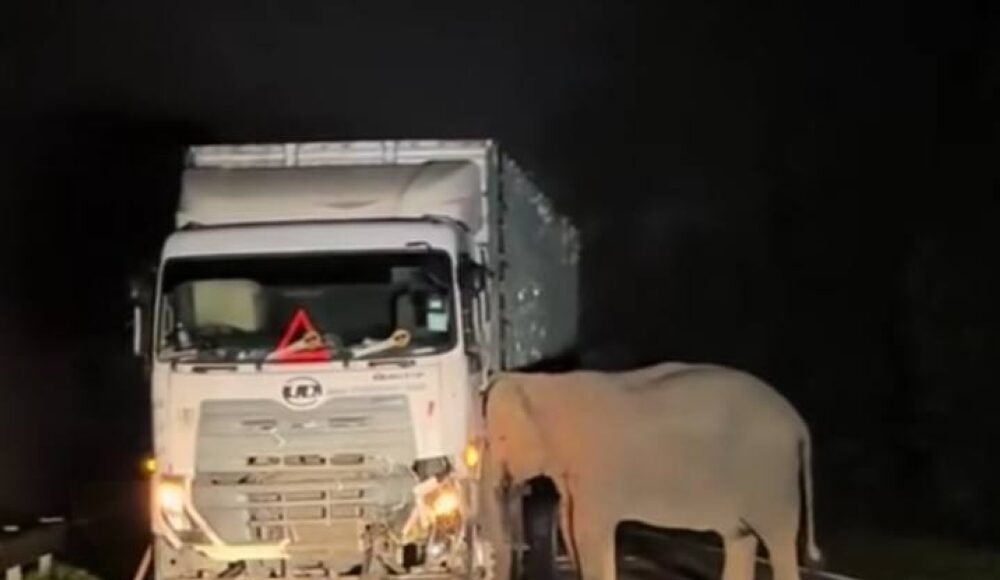KUALA LUMPUR, June 9 — On May 11, 2025, as the world celebrated Mother’s Day, a grieving mother elephant stood beside her lifeless calf which was under a lorry along the East-West Highway.
The footage of her standing by her calf’s body, unwilling to leave, struck a nerve across the nation.
The young calf had been struck by a lorry carrying poultry near KM80 of the Gerik-Jeli stretch, a critical wildlife crossing area within the Belum-Temengor Forest Reserve and a significant component of Malaysia’s Central Forest Spine (CFS).
For hours, the mother elephant remained by her fallen calf’s side — a silent testament to the depth of their bond and a powerful call for urgent lasting action that not only prevents such tragedies but secures a future where wildlife and people can co-exist, sustainably and safely.
This tragedy was not an isolated incident.
Just last November, a tiger met the same fate on this very road. In recent years, this highway, which cuts through the heart of the CFS — a crucial ecological network stretching from Kedah to Johor — has become perilous for Malaysia’s most endangered species.
According to the Ministry of Natural Resources and Environmental Sustainability, 2,361 wild animals have been killed by vehicles since 2020. Among them were eight Asian elephants, and since 2023, six Malayan tigers — a devastating toll for a species with fewer than 150 left in the wild.
Now, we mourn yet another tragic loss — an elephant struck down on a highway that cuts through its ancestral habitat.
Each death is not just a number — it edges these species closer to extinction and reflects a collective failure to safeguard our natural heritage.
The critically endangered Malayan tiger photographed deep within the Central Forest Spine. — Picture courtesy of Nuvista Media
As the philanthropic arm of Sime Darby Berhad, SD Guthrie Berhad, and Sime Darby Property Berhad, Yayasan Sime Darby (YSD) is deeply invested in safeguarding Malaysia’s natural heritage.
Since 2017, more than RM33.7 million has been channelled into environmental efforts across the CFS region — one of the last strongholds for species like the Asian elephant, Malayan tiger, and countless lesser-known but ecologically important species.
Since 2012, YSD’s almost RM9.5 million investment in the Management and Ecology of Malaysian Elephants (MEME) has driven long-term research and practical innovations.
These include GPS collaring of wild elephants, the deployment of bioacoustics monitoring, camera trap networks, and early warning systems in high-risk zones to mitigate human-elephant conflict and reduce the risk of collisions.
In parallel, MEME works with local communities and plantation estates to translate research findings into actionable strategies that mitigate conflict and strengthen incident response, towards improving co-existence and minimising risks to both people and wildlife.

Wild elephants observed at a roadside with little to no barriers in between. — Picture courtesy of MEME/Alicia Solana-Mena
“This tragic incident is yet another urgent reminder that this is a road that cuts across important wildlife habitats. We need tolerance and precautionary actions from road users to help increase safety for all,” said Dr Wong Ee Phin, Principal Investigator of MEME and Associate Professor at the University of Nottingham Malaysia.
“Elephants are highly intelligent and social animals. The death of one affects an entire herd. Over a decade of research into their behaviours around roads must now translate into decisive action.”
This tragedy has only reinforced YSD’s long-standing commitment to protecting Malaysia’s biodiversity.
As a long-time funder and advocate for conservation in the Central Forest Spine, YSD has worked closely with civil society organisations, researchers, communities, and policymakers to address threats to wildlife through sustained, science-driven solutions.
In the days that followed the tragedy, YSD convened strategic consultations with their core conservation partners and a broader group of stakeholders across government, NGOs, academia and the private sector strengthening relationships and building new connections.
These sessions revisited collision data, assessed mitigation gaps, and outlined practical, long-term interventions.
But this is only the beginning. YSD is committed to leading that journey to prevent future tragedies, strengthen coordination and bring in more voices — including from the infrastructure and transport sectors with coexistence as the outcome, not just conservation.
“YSD has supported the Central Forest Spine with various initiatives for over a decade. What’s urgently needed now is a coordinated, long-term impact approach — and we’re committed to driving that forward,” said Puan Sri Normah Hashim, Governing Council Member of YSD.
“We are also working with partners like PLUS Malaysia Berhad, whose expertise in highway infrastructure and safety solutions is critical to ensuring the success of this effort.”
YSD’s work in Perak has centred on enabling co-existence in and around the Belum-Temengor forest complex.
Through partnerships with Perak State Parks Corporation (PSPC), Tiger Protection Society of Malaysia (RIMAU), and Tropical Rainforest Conservation & Research Centre (TRCRC), these efforts have led to over 2,400 anti-poaching patrols, the training of more than 30 Orang Asli rangers under RIMAU, 38 rangers from the local community under PSPC, as well as the restoration of 30 hectares of degraded forest.
These place-based initiatives have strengthened critical habitats for tigers and elephants and safeguarded endangered tree species, contributing to long-term biodiversity in the Central Forest Spine.
“Belum-Temengor forms part of a critical ecological corridor that is already under significant pressure. While we are working to restore degraded areas such as the Amanjaya Forest Reserve to improve habitat and strengthen connectivity, these efforts alone are not enough.
“Making a meaningful difference requires collaboration across all sectors. At present, the most pressing concern is the road and the complex issues surrounding it. Without a shared commitment to address this, we risk undoing decades of conservation progress.” stressed Dr Dzaeman Dzulkifli, Executive Director, TRCRC.
While recognising the government’s existing efforts — including wildlife crossings, signages, and certain structural measures along the Gerik-Jeli highway — this recent tragedy clearly indicates that current provisions are insufficient. The persistence of wildlife fatalities necessitates further urgent interventions – for long term impact.
Among immediate feasible measures, average-speed enforcement — rather than isolated speed traps — can help ensure consistent safe speeds along wildlife-sensitive zones. Likewise, limiting heavy vehicle access along this highway during night hours, as successfully done in India’s Bandipur Tiger Reserve, could help cut roadkill.
With the East Coast Rail Link and alternative logistics corridors in development, Malaysia has options to shift freight patterns away from critical habitats.
In the longer term, more investment is needed for public safety and national biodiversity protection, such as dedicated wildlife viaducts, strategic fencing, lighting technologies and vehicle movement and speed control, that reduce wildlife-road interactions without affecting nocturnal species’ behaviour or the essential movement of commercial vehicles at night.
“There are broader environmental issues at play. Habitat fragmentation and forest encroachment are forcing wildlife, including elephants and tigers, to cross major roads in search of food and shelter,” said Lara Ariffin, President of RIMAU.
“The safety of our wildlife cannot be separate from human safety. Without comprehensive safeguards along highways like Gerik-Jeli, we risk losing not only wildlife but human lives as well.”
YSD remains committed to supporting Malaysia’s conservation priorities through actionable science, infrastructure cooperation, and community engagement.
Protecting the CFS landscape — and within it, the Belum-Temengor ecosystem — requires coordinated effort, stronger policy alignment, and sustained investment.
“Thriving populations of large mammals are a strong indicator of a healthy, intact ecosystem. Their conservation requires vast, connected landscapes and the collaboration of many stakeholders through well-coordinated efforts,” said Lau Ching Fong, Acting Director of PSPC.
“Support from corporate partners like Yayasan Sime Darby (YSD) plays a crucial role in providing the resources needed to protect and preserve this shared natural heritage for all Malaysians.”
The mother elephant’s cry must not be forgotten. Let this tragedy mark the moment Malaysia chooses true coexistence — not just in principle but through sustainable actions from a collective national conscience that values long-term impact.
Our response today will shape whether future generations inherit a land shared with our precious elephants and tigers, or only the memory of their final cries.





